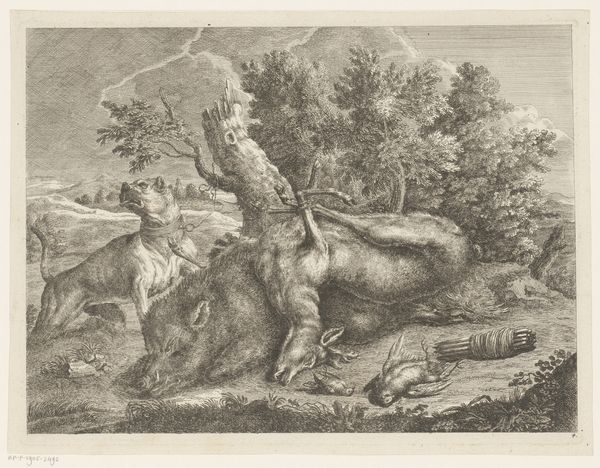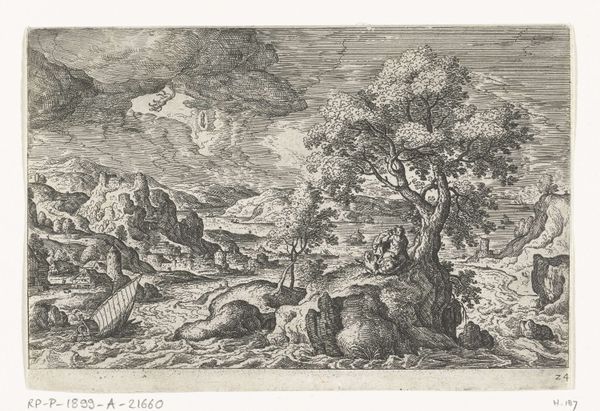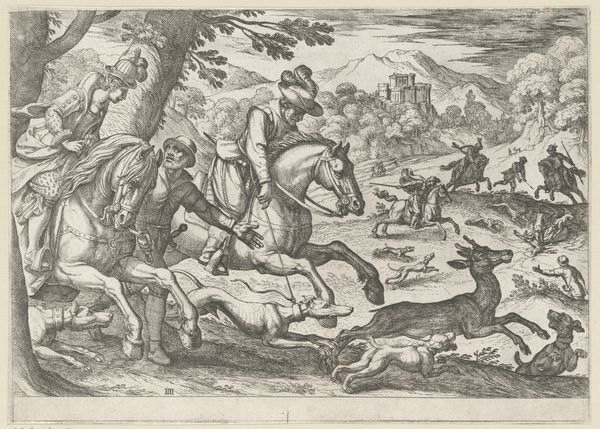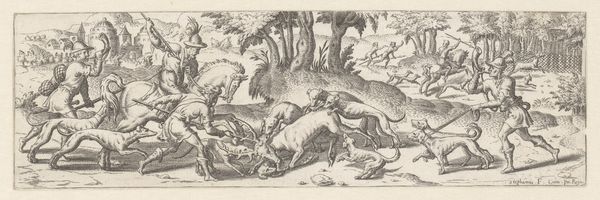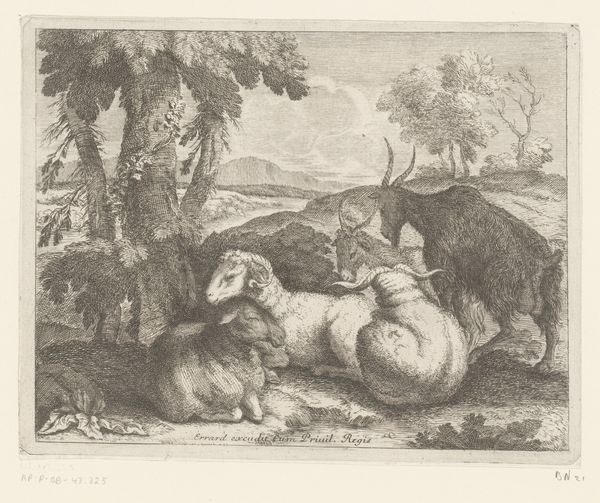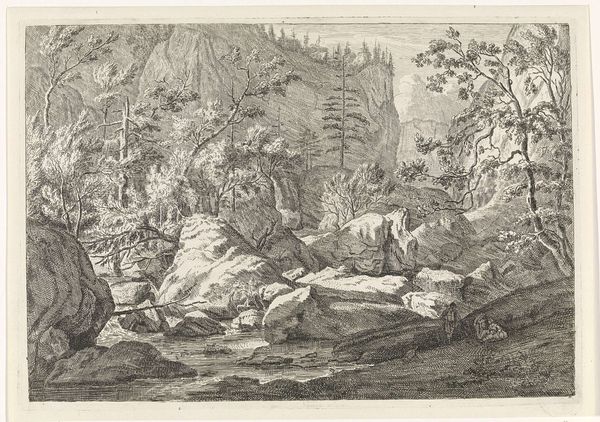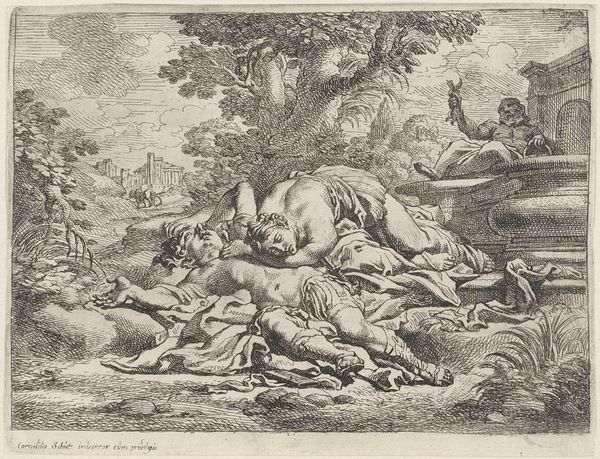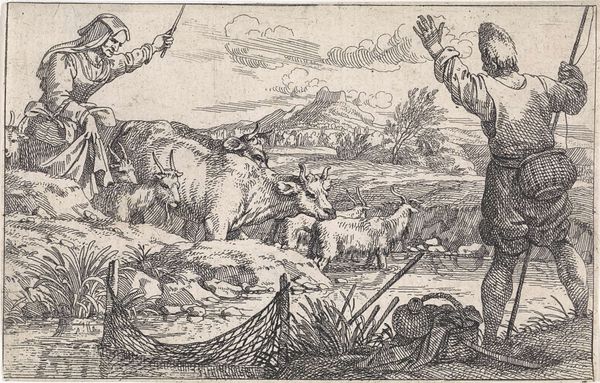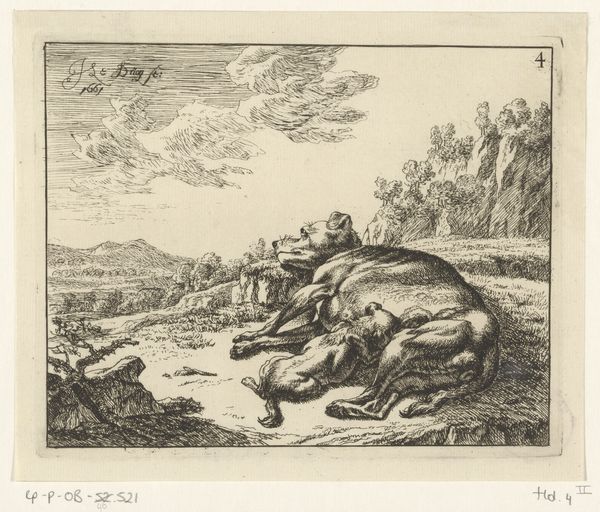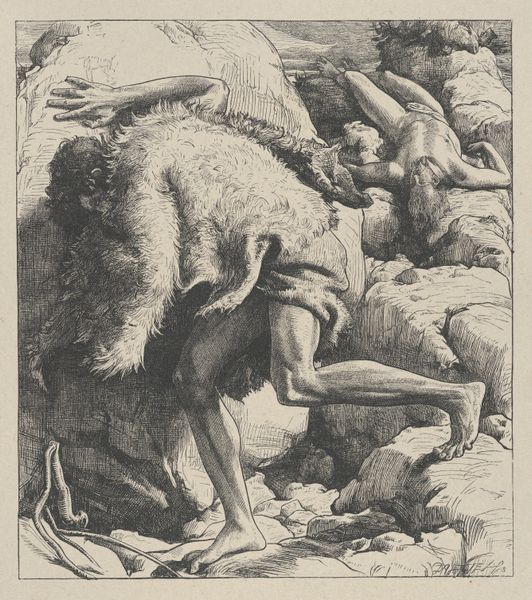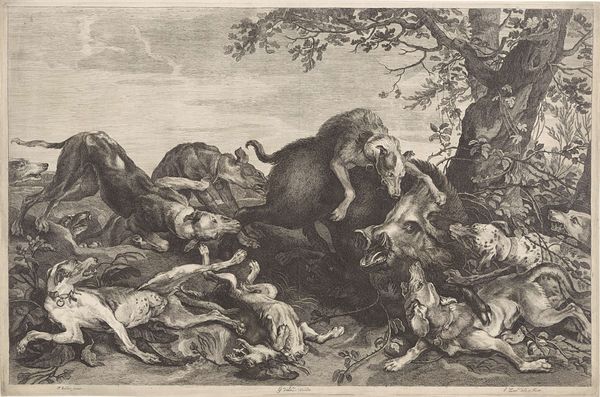
print, etching
#
baroque
# print
#
etching
#
landscape
#
figuration
#
history-painting
Dimensions: height 204 mm, width 306 mm
Copyright: Rijks Museum: Open Domain
Curator: Welcome! We are standing before “Wild Boar Hunt,” a print by Gillis (I) Peeters, dating sometime between 1622 and 1653. It’s currently housed here at the Rijksmuseum. Editor: My first impression is the incredible dynamic energy conveyed in this scene, though rendered in a rather stark, almost academic, black and white. It feels quite brutal. Curator: Brutal, indeed! Look closely at how Peeters uses etching techniques to define form. See the bold, almost frenetic lines used to depict the chaos of the hunt. The overlapping figures create a powerful sense of depth and movement. Consider, too, the Baroque aesthetic—a period enamored with dynamism and heightened emotion. Editor: Absolutely, and the "chaos" is interesting. I mean, hunting scenes during this era were rarely just about sport. They symbolize the dominance of the aristocracy, right? The Chateau de Vincennes in the background speaks to that power structure, especially regarding control over the landscape and its resources. It seems that power is not necessarily only invested with people here, but within the animals too. Curator: That is very well-observed, the composition directs us to the background in an instance. Although it might escape us, we ought not ignore the trees above either. Look at their composition relative to the image as a whole; one would notice a sense of careful balancing from that asymmetry alone. Editor: Certainly, although I keep thinking about the animals as victims. There's an undeniable cruelty depicted. These aren’t just landscapes with figures; they’re narratives of domination and suppression. Are we meant to see only nobility and triumph, or does the artist invite us to reflect on what is lost when humanity subjugates nature? I want to push beyond aesthetics toward questioning social norms that legitimized such spectacles. Curator: A very fair critique. Still, one cannot ignore how effectively Peeters used line and composition to create this image! It is after all that effective depiction of dynamism that brings about a strong emotional reaction. In other words, you may say, to appreciate a piece does not mean necessarily accepting it, just respecting what it does well as a piece. Editor: Precisely! Understanding art requires navigating that complexity—the beauty of execution versus the politics embedded within. This reminds us that museums aren't neutral spaces, but rather sites of critical engagement.
Comments
No comments
Be the first to comment and join the conversation on the ultimate creative platform.
